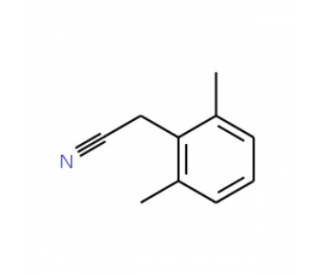详细说明
Species Reactivity
Mouse
Specificity
Detects mouse TEX19.1 in direct ELISAs.
Source
Monoclonal Rat IgG 2A Clone # 678826
Purification
Protein A or G purified from hybridoma culture supernatant
Immunogen
E. coli-derived recombinant mouse TEX19.1
Arg189-Pro351
Accession # Q99MV2Formulation
Lyophilized from a 0.2 μm filtered solution in PBS with Trehalose. *Small pack size (SP) is supplied as a 0.2 µm filtered solution in PBS.
Label
Unconjugated
Applications
Recommended
ConcentrationSample
Western Blot
1 µg/mL
See below
Immunocytochemistry
8-25 µg/mL
See below
Please Note: Optimal dilutions should be determined by each laboratory for each application. are available in the Technical Information section on our website.
Data Examples
Western Blot | Detection of Mouse TEX19.1 by Western Blot. Western blot shows lysates of mouse testis tissue. PVDF membrane was probed with 1 µg/mL of Rat Anti-Mouse TEX19.1 Monoclonal Antibody (Catalog # MAB66451) followed by HRP-conjugated Anti-Rat IgG Secondary Antibody (Catalog # ). A specific band was detected for TEX19.1 at approximately 43 kDa (as indicated). This experiment was conducted under reducing conditions and using . |
Immunocytochemistry | TEX19.1 in D3 Mouse Embryonic Stem Cells. TEX19.1 was detected in immersion fixed D3 mouse embryonic stem cells using Rat Anti-Mouse TEX19.1 Monoclonal Antibody (Catalog # MAB66451) at 10 µg/mL for 3 hours at room temperature. Cells were stained using the NorthernLights™ 557-conjugated Anti-Rat IgG Secondary Antibody (red; Catalog # ) and counterstained with DAPI (blue). Specific staining was localized to nuclei and cytoplasm. View our protocol for . |
Preparation and Storage
Reconstitution
Sterile PBS to a final concentration of 0.5 mg/mL.
Shipping
The product is shipped at ambient temperature. Upon receipt, store it immediately at the temperature recommended below. *Small pack size (SP) is shipped with polar packs. Upon receipt, store it immediately at -20 to -70 °C
Stability & Storage
Use a manual defrost freezer and avoid repeated freeze-thaw cycles.
12 months from date of receipt, -20 to -70 °C as supplied.
1 month, 2 to 8 °C under sterile conditions after reconstitution.
6 months, -20 to -70 °C under sterile conditions after reconstitution.
Background: TEX19.1
Testis-expressed protein 19.1 (TEX19.1; also Tex19a and Tex19) is a 40 kDa (calculated) pluripotent stem cell molecule. Mouse TEX19.1 is 351 amino acids (aa) in length. The first conserved domain is localized on the N-terminal boundary of the protein and is 58 residues long. It is known as the MCP domain, and begins with an invariant MCPPVS motif. The second conserved domain, known as the VPTEL domain, begins with an invariant VPTEL motif and is 38 amino acids long. Mouse TEX19.1 shares 70% and 24% aa identity with rat and human Tex19.1, respectively. The protein is restricted to mammals and is expressed in testis, placenta, and ovary. It is expressed in early embryo and is later limited to the germ line. TEX19.1 has been shown to present in the cytoplasm of spermatogonia and early spermatocytes in adult mouse testes (1). TEX19.1 is thought to be a transcription factor regulating target genes responsible for pluripotency; alternatively, it may have a role in controlling the chromatin architecture of the pluripotent nucleus.
References:
Ollinger R. et. al. (2008) PLos 4(9):e1000199.
Long Name:
Testis Expressed 19.1
Entrez Gene IDs:
73679 (Mouse)
Alternate Names:
TEX19.1; Tex19a











 粤公网安备44196802000105号
粤公网安备44196802000105号